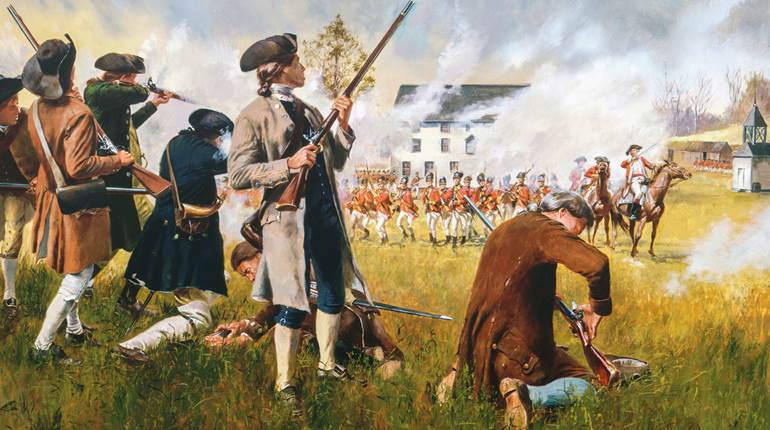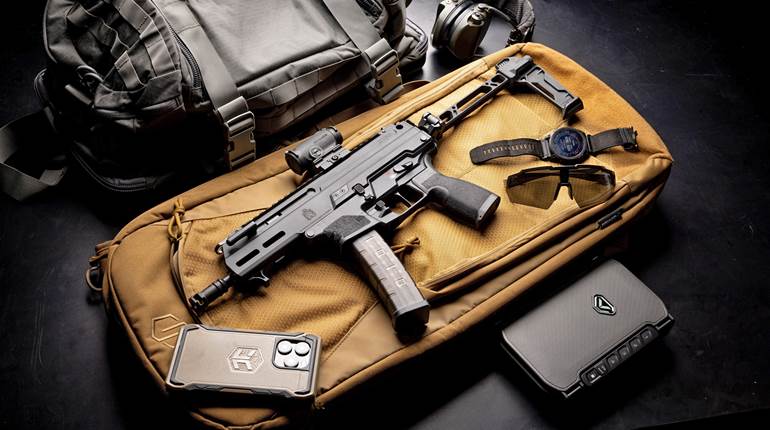
This review of the Steyr AUG A3 M1 appeared originally in the July 2015 issue of American Rifleman. To subscribe to the magazine, visit the NRA membership page here and select American Rifleman as your member magazine.
When first introduced in 1977, the Steyr AUG looked radically futuristic, and despite the intervening decades of firearm development, it still ranks highly among the guns most likely to appear in a science-fiction movie.
At the time of its creation, the AUG’s bullpup design—a configuration placing the firearm’s action and magazine behind the trigger group in order to reduce overall length without sacrificing barrel length—was equally ahead of its time.
While the bullpup hasn’t exactly gone on to set the gun world on fire, several manufacturers have found reasonable success tinkering with and improving upon the formula—including Steyr itself.
Despite already being one of the most successful bullpups of all time, Steyr Mannlicher continues to make design improvements and upgrades to its AUG (or Armee Universal Gewher), including its newest iteration—the A3 M1—which offers shooters more sighting options than any of its predecessors.
Making use of a modular optics attachment platform, the A3 M1 is available in Short-Rail, High-Rail and integrated-optic versions with either a 1.5X or 3X scope built into the carry handle. In addition, all three optics-mounting modules can be easily interchanged with one another.

The Short-Rail includes 11 numbered Picatinny rail slots for the mounting of optics. It ends at the back of the receiver and sits 0.435" above the stock comb. The High-Rail extends an additional 2.57" from the end of the receiver and offers 16 numbered slots at a height of 0.82" above the comb.
Steyr’s integrated optic module, in addition to an integral Meopta riflescope, features a 15-slot rail along the top of the housing to accommodate a close-quarter reflex sight, and a four-slot section on the right side for the use of a light or laser. The scope’s axis rests 1.945" above the stock comb, allowing for a solid cheekweld.
The A3 M1 is available in two stock varieties—the traditional version, which uses Steyr’s proprietary “waffle-style” polymer magazines, and the NATO version, which accepts the widely available STANAG magazines. The traditional configuration is available in black, tan and green, while the NATO version comes only in black.
Much of the rest of the A3 M1 remains unchanged from its previous incarnation, the AUG A3 SA. The guns are short-stroke, gas-piston operated with a two-position gas regulator—one for normal use and one allowing more gas flow for use when the rifle is dirty.
The receivers are made from investment cast, Eloxal-coated aluminum, and the barrels are phosphated, chrome-lined steel. The AUG’s distinctive folding fore-grip is also still here, able to be used either perpendicular or parallel to the bore. The A3 M1 likewise retains the quick-change barrel capability of the A3 SA, allowing the barrel to be removed with the push of a button.

A non-reciprocating charging handle is located on the left side of the receiver, and doubles as a forward assist. The bolt can be locked back by retracting the charging handle and rotating it clockwise against a notch in the receiver.
In order to then close the action, lightly slapping the handle out of the notch will cause the recoil spring to drive it forward. A five-slot Picatinny rail is situated on the right side of the receiver, opposite the charging handle.
The magazine release, located just behind the magazine well, is positioned for ambidextrous use. At 8 lbs., 15 ozs. with an empty magazine and the integral scope installed, the A3 M1 is not a light rifle, but the gun is balanced in such a way that it feels far lighter than that when shouldered.
The A3 M1 can be reconfigured for ejection from the left side by replacing the standard bolt with a left-hand unit and swapping the ejection port cover to the opposite side. While these changes make the bullpup usable by a southpaw, the position of the charging handle may still be awkward for some left-handed shooters.
The trigger is often the Achilles heel of many bullpup designs, owing to the long trigger bar required to link the fore-mounted trigger to the action behind it, but the gun we received for evaluation featured an exceptional trigger pull for a stock factory bullpup. Initial take up was scarcely perceptible, with the trigger breaking cleanly at 10 lbs., 4 ozs.—a little heavy perhaps, but not too bad.

American shooters have been clamoring for an integrated-optic version of the AUG available here for a long time, which is why we elected to conduct accuracy testing using the 3X integral scope.
Accuracy at 100 yds. was decent for a gun of this type using 3X magnification; however, we believe the rifle capable of even smaller groups with the use of a more powerful optic.
Initially we encountered a few feeding issues, but were quickly able to diagnose them as being magazine-related. Switching to another magazine eliminated the problems. All firing was conducted using the gas regulator’s “normal” setting.
The Steyr AUG’s appearance is polarizing, with some shooters finding its lines appealing, and others finding them appalling. But aesthetics aside, the A3 M1 is a solid—if unorthodox—performer, and a good option for those seeking a 5.56x45 mm NATO-chambered semi-automatic rifle but wanting an alternative to the hoi polloi of the otherwise AR-laden general-purpose rifle market.





































